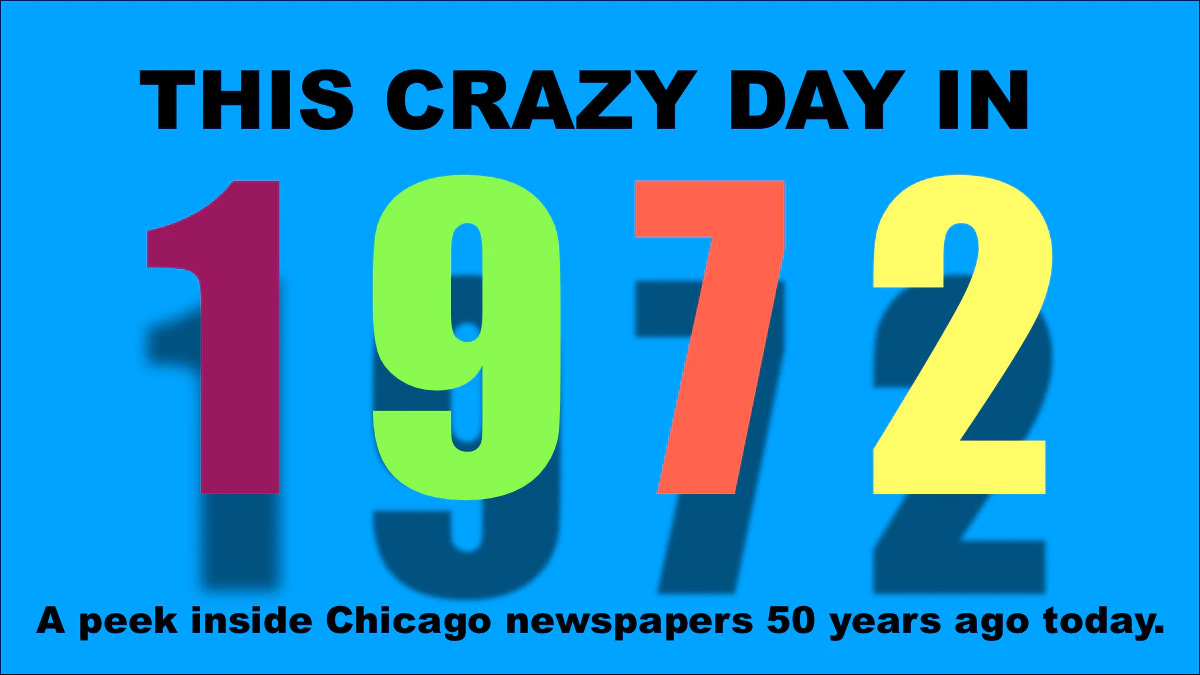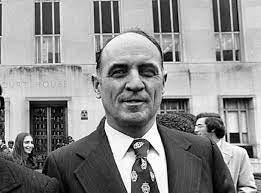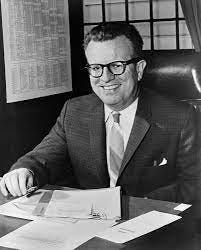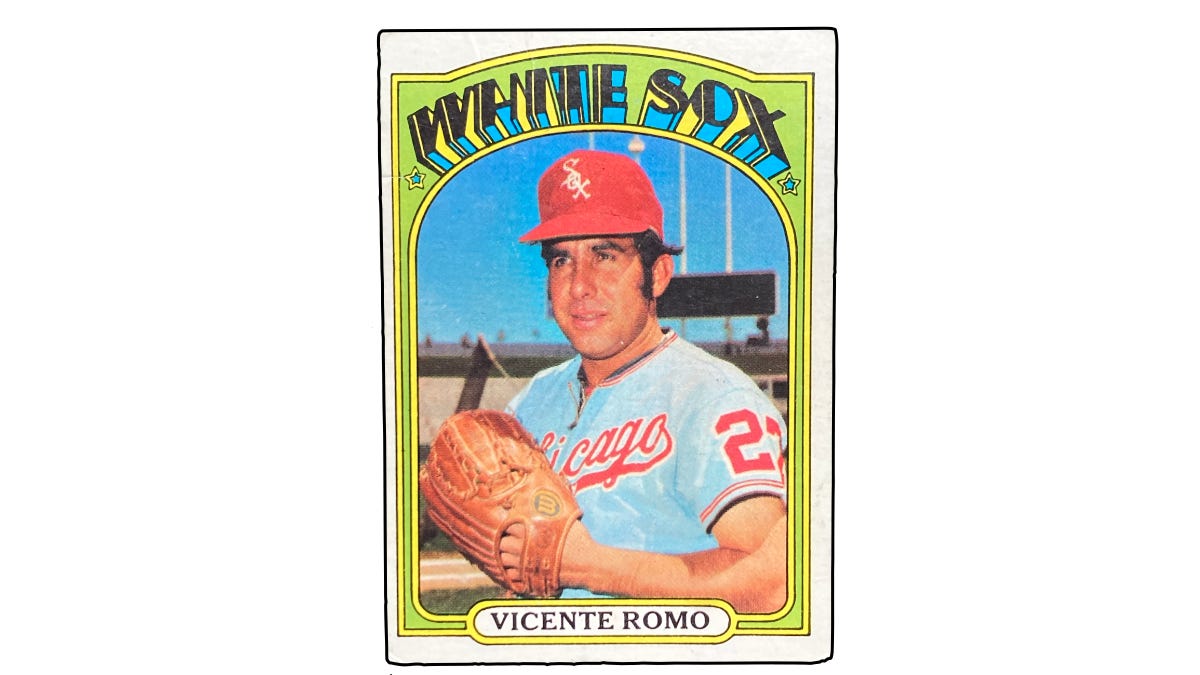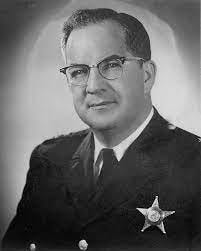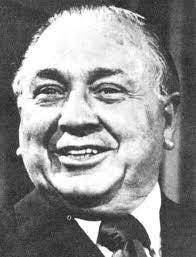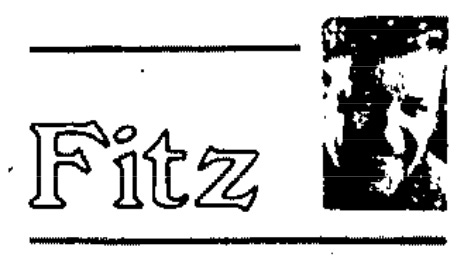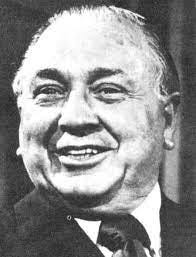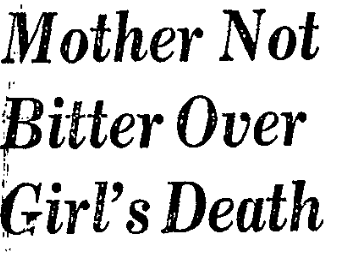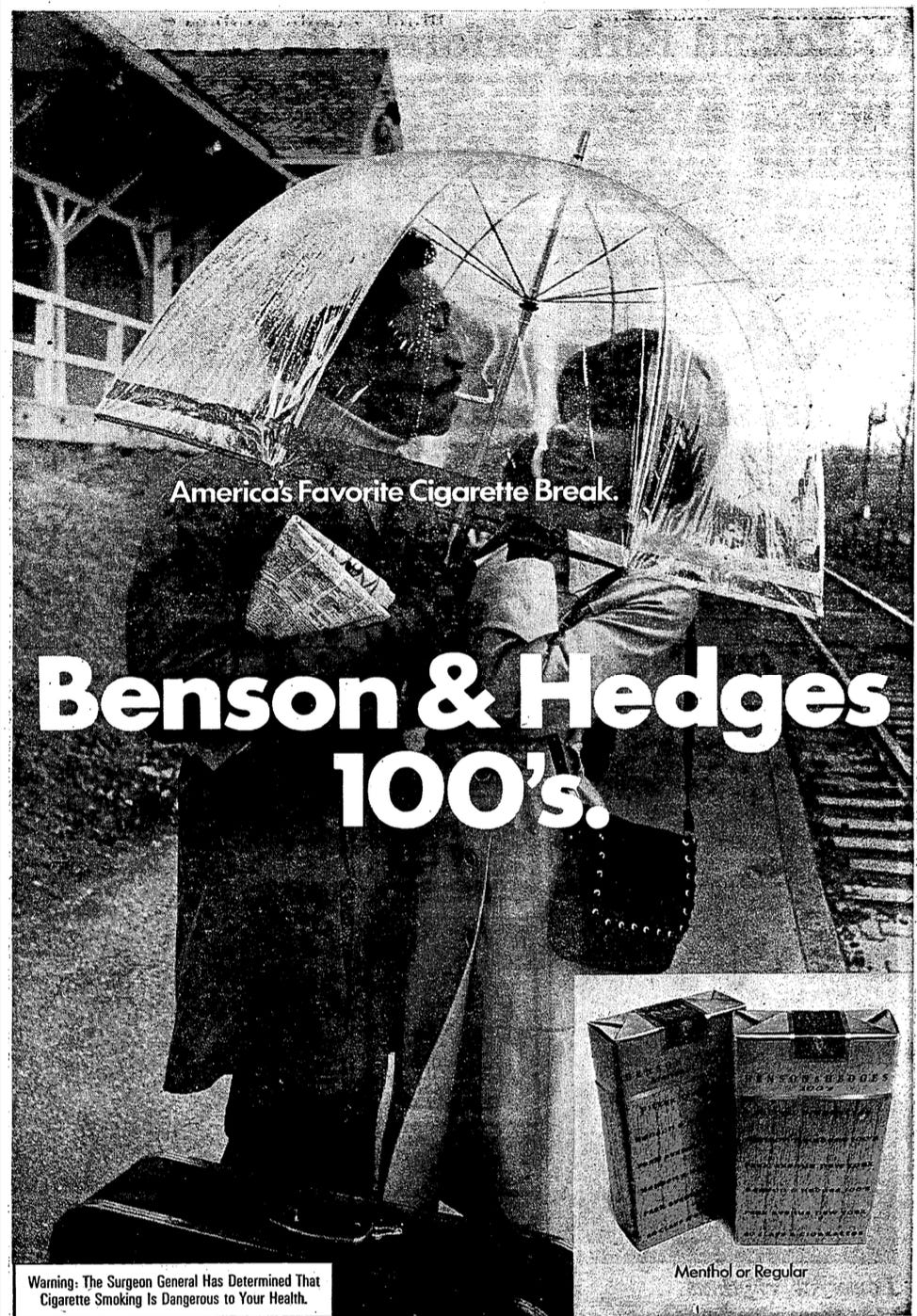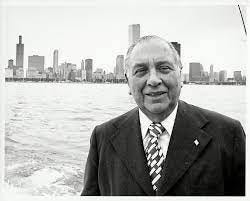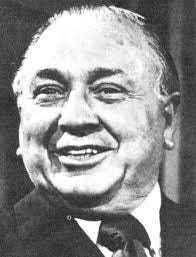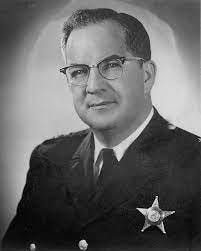THIS CRAZY DAY IN 1972: The Hit Squad
Weekly Compilation: June 19-25, 1972
To access all website contents, click HERE.
Why do we run this separate item peeking into newspapers from 1972? Because 1972 is part of the ancient times when everybody read a paper. Everybody, everybody, everybody. Even kids. So Steve Bertolucci, the 10-year-old hero of the novel serialized at this Substack, read the paper too—sometimes just to have something to do. These are some of the stories he read. Follow THIS CRAZY DAY on Twitter, @RoselandChi1972.
June 19, 1972
Chicago Daily News, page 2
Daily News Wire Services
Chicago Today, page 3
Associated Press
Chicago Tribune, page 3
New York Times Wire Service
Older Readers: With the 50th anniversary of Watergate, get ready for what may feel like a family reunion where all the out-of-towners stay at your house—for a weekend that turns into a couple of years.
Younger Readers: For you, the Watergate family reunion means you’ll be expected to meet and remember the names of so many weird uncles and cousins you’ve only vaguely heard about for years. Friendly tip: Don’t let everybody else go to bed and leave you alone in the kitchen with Uncle Gordon. He’ll seem like a lot of fun, until he doesn’t.
Today we look at the very first articles Chicagoans read about Watergate, the political scandal so nice they named every future scandal of any kind after it for 50 years and counting.
Think about it: Why wasn’t Watergate named “WatergatePot” for the Teapot Dome Scandal? In part because Robert Redford and Dustin Hoffman didn’t make a movie about the Warren G. Harding administration, sure. But still.
For the most part, TCD1972 will cover the Watergate coverage as it happens and Chicago readers experienced it, rather than correct or embellish with spoiler alerts. Except when I can’t resist. This is a complicated and sometimes fast-moving story, so some reported “facts” may change as time goes on.
The main thing to remember is that right now, Watergate stories are just one more whacky 1972 political thing among so many, as Democrats and Republicans gear up for their national conventions; everybody remembers the Chicago 1968 Democratic convention and wonders what mayhem the young folk and Yippies will wreak this year in Miami; and Mayor Daley fights for his elected slate of delegates to be seated at the convention rather than the upstart unelected group led by Ald. Bill Singer.
Only the Sun-Times put the bugging of the Democratic National Committee headquarters on the front page. Somebody deserves a very tardy prize for that.
If you read any other paper today, you could’ve flipped right past proto-Watergate. The Trib and Chicago Today ran their stories on page 3, a respectable position but still easy to skip among so much other news. Chicago Today’s story was underneath the worldwide strike by 50,000 pilots to protest lax skyjacking security measures, while the Trib’s was next to a big dramatic picture of a Florida Keys trailer park torn apart by Hurricane Agnes. Both were much sexier stories.
The Daily News put the story at the top of page 2—but how many people started the front page story “5 braless women jolt store here” and then turned right to the back page of the first section for the jump to see how that story ended? I would have.
Enough build up. Watergate begins NOW.
Associated Press via Sun-Times: “One of five men arrested for breaking into offices of the Democratic National Committee is the security co-ordinator for President Nixon’s chief campaign committee, public records show.
“Court records in the case list the man as James W. McCord Jr., of 7 Windsor Court, Rockville, Md.”
Google maps claims 7 Windsor Court doesn’t exist or rest assured a picture would be right here instead of this sentence.
Short pause to marvel as always at the publication of an exact home address when a general ID would do, which is how all media rolls for most of the 20th century.
AP: “Democratic National Chairman Lawrence F. O’Brien said yesterday the affair raised ‘the ugliest questions about the integrity of the political process that I have encountered in a quarter-century of political activity.’” Elsewhere, he will sometimes be “Larry O’Brien.”
O’Brien sent a telegram to Attorney General Richard Kleindienst, calling for a full FBI investigation to determine who is “behind this incredible act of political espionage.” *
Details of the arrests from AP: “When seized, the men were wearing rubber surgical gloves and carried expensive electronic and photographic equipment, plus what police described as elaborate burglar kits.
“Some $6,500 in brand-new bills, mostly of $100 denomination and consecutively numbered, also was found on the men and in two rooms they had taken the day before at the plush Watergate Hotel, next door to the D.N.C. headquarters.”
Watergate acronyms will soon be as familiar to Americans as “YMCA.”
And per the AP, nobody understood the link to the Committee to Re-elect the President “until The Associated Press found James W. McCord Jr. listed in a voluminous record filed June 10 as required under the new campaign finance act.”
“The reports listed McCord as receiving a salary of $1,209 a month and other expenses for April and May as ‘security coordinator’.” That’s $8,160/month in 2022 money.
“The new campaign-finance act does not require itemization of expenses prior to April 7.” So boring bureaucratic paperwork never before required is going to sink a presidency? McCord has some security contracts with the Republican National Committee, too.
The other four burglars all gave Miami addresses. The Daily News adds that three of them “were described as Cuban refugees,” giving their names and aliases. They all have aliases.
McCord turns out to be “reportedly retired two years ago as chief of security at the Central Intelligence Agency’s Langley, Va. headquarters” and now runs his own private security agency.”
From the Tribune via the New York Times wire service: McCord “was also said to have been one of the top planners of the Central Intelligence Agency’s abortive invasion of Cuba in 1961.” Another suspect is “Cuban-born Bernard L. Barker, who, under the code name of ‘Macho,’ acted for the CIA in planning the Bay of Pigs operation.”
Among those who deny having anything to do with McCord’s burgling activities:
The CIA
Former Attorney General John Mitchell, who recently resigned to head Nixon’s re-election committee (CRP, aka CREEP)
Sen. Bob Dole, chairman of the Republican National Committee (RNC)
Mitchell says he’s “surprised and dismayed at the reports”. From the Daily News, a more extended quote:
“There is no place in our campaign or in the electoral process for this type of activity, and we will not permit it or condone it.”
Various Democrats assure reporters they don’t believe the CRP (aka CREEP) or RNC had anything to do with the burglary for today’s stories.
How did the burglars get caught? Right now readers know this much from news reports, here quoted from AP:
“Police were called…after a security guard noticed that a door leading from a basement garage…had been taped so it would not lock. Plain clothes officers followed a trail of taped locks to the sixth-floor party headquarters. When they entered a secretary’s office, one of the five men jumped from behind a desk, threw his hands up into the air and yelled ‘Don’t shoot.’”
*Telegrams
Yes, there are still telegrams in 1972 for when people want to be really dramatic.
As we noted the first time we ran into a telegram here:
Yes—there were still telegrams in 1972, though they were quite rare, and used as in this instance to make a statement. To adults in 1972 , telegrams symbolize an important message. Even in the heyday of telegrams, most people didn’t pay to send telegrams just any old time. While people might occasionally splurge to send a telegram for a fun occasion, telegrams were used for such serious purposes as informing a family when a soldier had died in battle. Remember “It’s A Wonderful Life” when Mr. Gower gets a telegram telling him his son Robert has “died of influenza”? Anyone of modest means would be somewhat worried to receive a telegram, back in the day.
By definition, a telegram enters into a story when there’s something pretty big going on. So it’s fun to look at telegrams so far in TCD1972:
On May 2, we read that U.S. Rep. Ralph Metcalfe telegrammed Mayor Daley to invite him to a public meeting about police brutality at Liberty Baptist Church, 4849 S. King Drive. Mayor Daley did not respond, or attend.
On December 7, Sun-Times columnist Tom Fitzpatrick wrote about filmmaker Mike Gray, who sent telegrams to Mayor Daley and Cook County State’s Attorney Ed Hanrahan. Gray invited them to come see his documentary “The Murder of Fred Hampton” at Sherman House, where he’d rented a suite for continuous showings on the day that Mayor Daley’s Democratic Central Committee members met in their Sherman House headquarters to put together their primary slate of candidates. The committee was going to decide whether to back Hanrahan for re-election, though he was indicted for conspiracy to obstruct the investigation into Hampton’s death (and Mark Clark’s) at the hands of State’s Attorney police in a 1969 pre-dawn raid. Nobody dropped by to see the film. The committee voted to back Hanrahan.
On Oct. 13, Sun-Times architecture critic Rob Cuscaden reported that Landmarks Preservation Council president Richard Miller was trying to reach Chicago building commissioner Joseph Fitzgerald-- to ask him to revoke the wrecking permit for Adler & Sullivan’s priceless Old Stock Exchange Building as demolition was poised to begin. Miller finally sent a telegram, since Fitzgerald wouldn’t talk to him on the phone. You can guess the ending if you’ve ever walked past 30 N. La Salle, or the Art Institute’s Columbus Drive entrance.
Sometimes a telegram actually is the best way for speedy communications in 1972: On February 24, we learned that Vicente Romo sent a telegram to White Sox manager Chuck Tanner to say he’d be late for spring training because he was home in Sonora, Mexico without air fare.
June 19, 1972
Chicago Daily News
no byline
“Five braless women staged a try-on at a State Street shop Monday, defying pleas from the agitated manager to don brassieres before putting on his blouses.

“‘You can’t do this, it’s a health hazard,’ yelled Irving Pomerantz as he paced outside the door to the fitting room at Lerner Shop, 30 N. State.”
The women were already inside the dressing rooms, doing their thing.
“‘You’re trying to make us feel our breasts are dirty,’ screamed Marilyn Katz, 824 W. Wrightwood.
“‘You don’t make us cover our elbows. What have you got against breasts?’”
“‘Nothing, nothing,’ Pomerantz cried out. ‘I like them, I think women’s breasts are beautiful. But if you girls would just co-operate…’
“That did it.
“The cry came thundering through the fitting room door:
“‘We are women, not girls.’”
After “terrified” manager Pomerantz called the cops, Sgt. Charles Gyrion pointed out that he could not go inside the ladies’ dressing room in order to eject the women. But by then it was too late. The try-on was over.
The women left, and even bought the merchandise.
The whole thing came about after protest leader Kay Stepkins of 3400 N. Halsted was ordered out of the same dressing room the previous week “because she was braless.”

“‘I wish they had gone through channels first,’ Pomerantz said of the ‘Fitting Room Five.’ ‘It’s our store policy that women wear undergarments before they try on clothes, but we could have worked something out.”
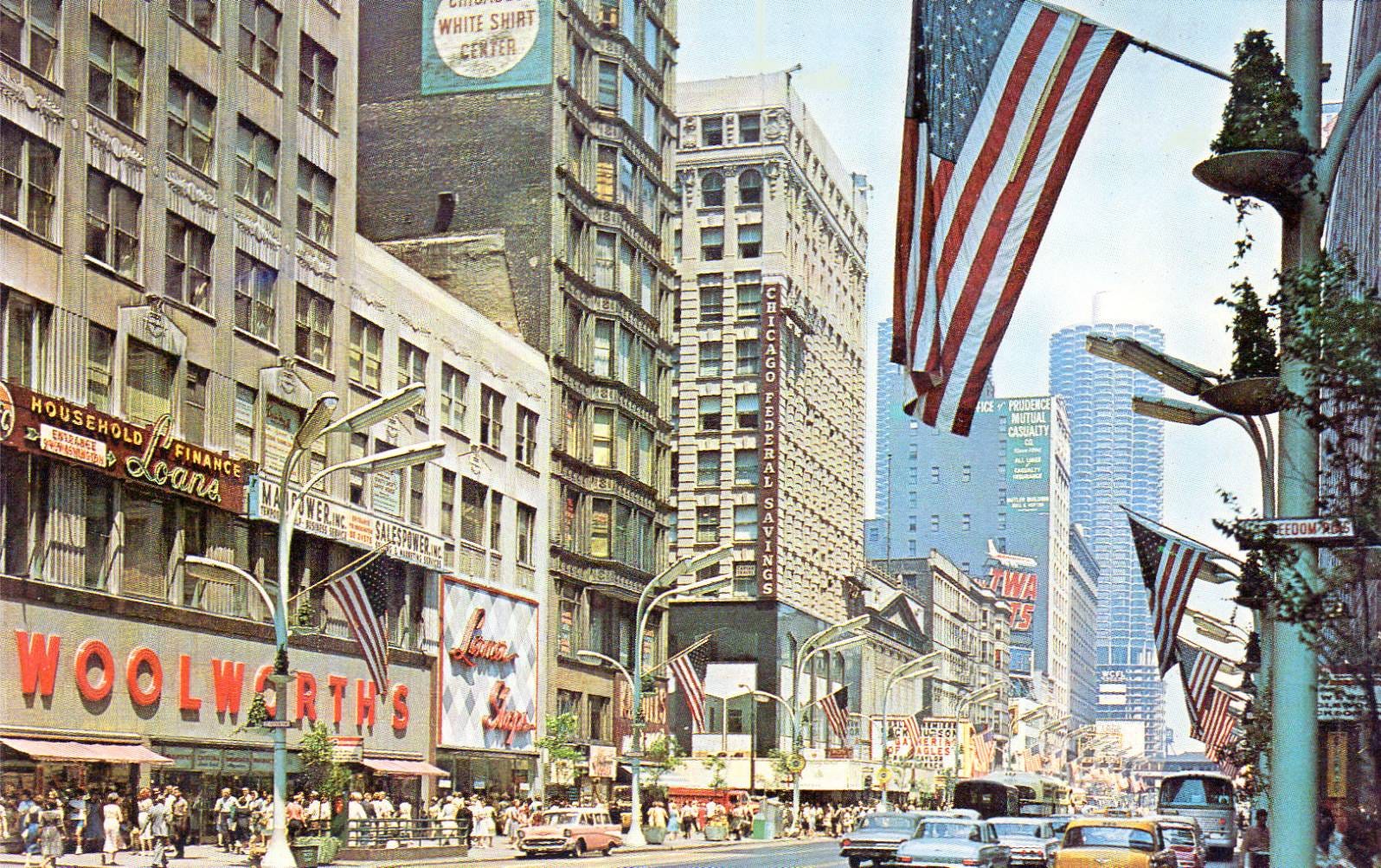
I know what you’re thinking. You figure the woman yelling from the dressing room was the Marilyn Katz, wellknown Chicago ‘60s activist and later media consultant to Mayor Harold Washington, and president of MK Communications.
But it is not. This Marilyn Katz assures me she was in Los Angeles writing “The Glasshouse Tapes,” not in Chicago trying on shirts without a bra, even during a quick weekend trip back home. It seems an incredible coincidence, but this Marilyn Katz says there was another Marilyn Katz about her age in Chicago at just that time, though they didn’t know each other. Too bad; it seems like they would have been pals.
June 19, 1972
Chicago Today: 1/4 page ad
So that’s when these started.
June 20, 1972
Chicago Sun-Times
by Paul McGrath
One day later, Irving Pomerantz denies that Lerner Shop requires bras when customers try on shirts.
It’s a little surprising that the Sun-Times felt this story was big enough to pick up from the Daily News.
Unless you live in 1972, when bras and whether they are on women or not is always big news.
“‘I don’t give a hoot if a woman goes without a bra,’” Pomerantz tells the Sun-Times. ‘We sell merchandise that is intended to be worn without a bra—we know there is a trend toward going without bras—so how could I say that a woman has to wear a bra.’”
That would make sense, but it doesn’t entirely square with Pomerantz’s statement yesterday to the Daily News that “it’s our store policy that women wear undergarments before they try on clothes”.
Supposedly, Pomerantz called the police because he believed the five women trying on clothes without bras in the dressing room were “occupying” the area and excluding other customers.
“This, according to Marilyn Katz, 27, an attorney who is one of the Braless Five, represents a reversal of his earlier position. She said a sign in the store, ‘Undergarments must be worn for ALL tryons,’ was cited by clerks who sought to prevent the women from trying on blouses without wearing brassieres.”
Could there be more to come? Oh, when it’s about bras in 1972, there’s always more.
June 20, 1972
Talk about front page news. This is what hit news stands and Chicagoans’ front porches in the late afternoon, with the morning papers following tomorrow:
by Edmund J. Rooney
and
Five Black uniformed policeman assigned to the West Side, including a sergeant, are suspected in a series of kidnap-murders of Black West Side businessmen between September 1971 and January 2, 1972.
The Daily News broke the mysterious kidnap-murder story on January 14, reporting that all the businessmen were shot execution-style in the head, their cars found abandoned, and their bodies washed up in the Sanitary and Ship Canal and the South Branch of the Chicago River.
The paper followed up with a February 9 article when the Chicago West Businessmen organization held a press conference, in which president Tommy Durham said he “fears that ‘successful black businessmen will be hit (killed) one by one’ unless the killers” are caught. Durham owns Durham Appliances, 3009 W. Madison. He said “he suspects the slayings are part of ‘a conspiracy to keep black businessmen from becoming and remaining successful.’”
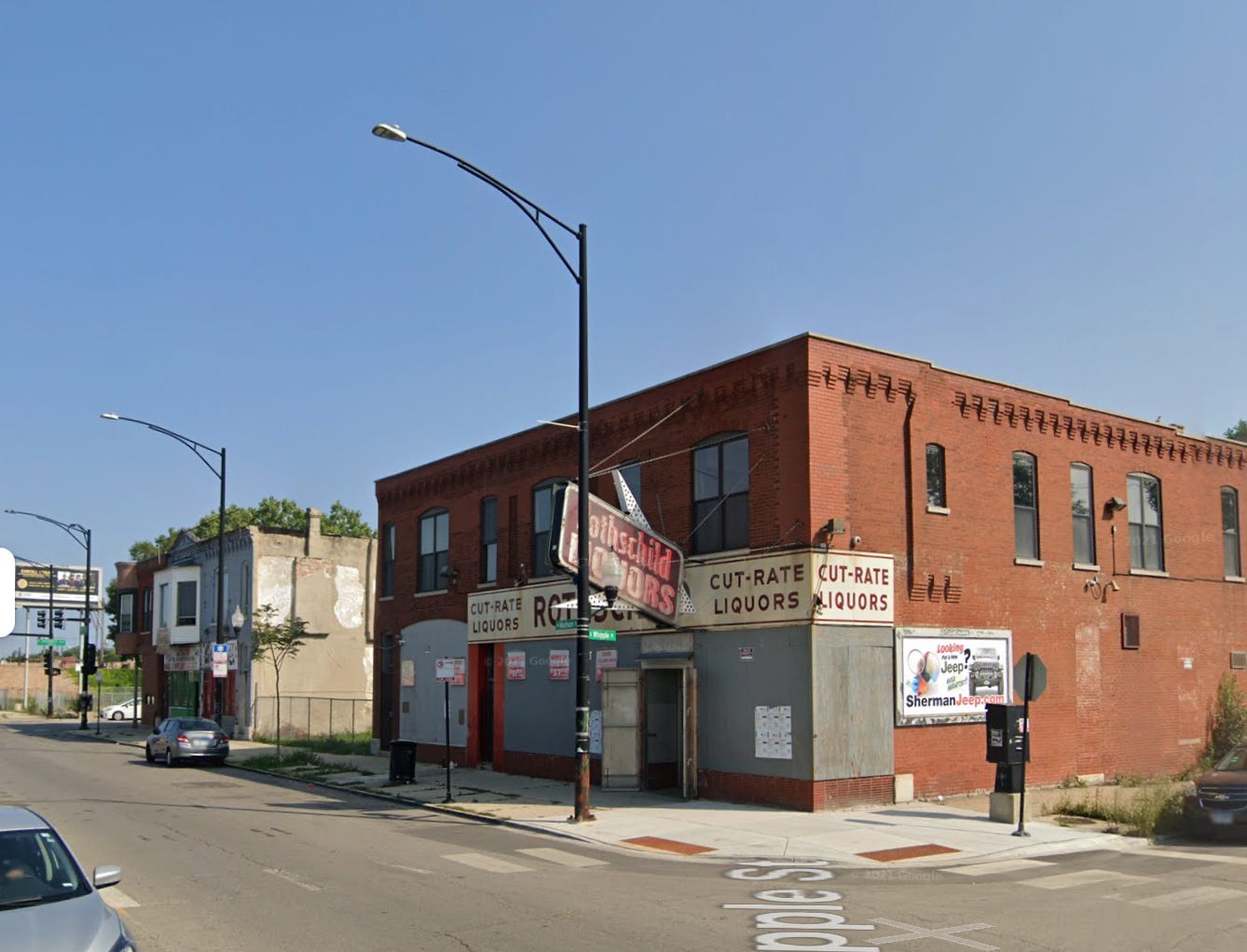
The Daily News and Chicago Today have different versions of how the case was cracked—but the investigation isn’t over, and no arrests have been made. Numbers of cops and murdered men will change now and then in different papers and/or as the story progresses.
“There may be more killings as a result of disclosures that authorities have linked five Chicago policemen to the execution-type murders of at least six black men, high police sources told The Daily News Tuesday,” writes the Daily News’ Rooney.
“A six-month joint investigation by police and the FBI linked the five policemen to the murders and to West Side narcotics racketeering.
“The investigation also may bring disclosures of rivalries among members of an interstate narcotics ring, police sources added.”
Two of the victims were probably killed accidentally, mistaken for other people. The men were all carrying cash, sometimes a lot. That includes the last victim, Richard Stean. He left his parent's apartment after New Year’s Day dinner with $2,500 to pay a contractor who’d done work in his apartment, which is $16,875 in 2022 money.
“Shortly after the (Daily News) story appeared, Stean’s father, O.C. Stean, received an extortion letter demanding $11,000 for the return of his son.” That’s $74,250 in 2022 money. He gave the letter to the FBI, which opened an investigation due to use of the postal system, and because one kidnap victim was taken across state lines to Indiana.
This investigation “tied in with an investigation by federal, state and local authorities into police involvement in the narcotics racket” in which FBI agents have questioned “dozens of Chicago policemen in recent weeks.”
But a “high-ranking police official” says there isn’t enough evidence to arrest the policemen yet. Chicago Police Supt. James Conlisk will only say the investigation is under way and he hopes for early indictments.
“Some of the murders reportedly were committed by on-duty uniformed policemen riding in blue and white Chicago squad cars,” writes Rooney.
“One victim reportedly was ordered out of a squad car and shot in the back. When the bullets did not kill the victim, one suspected police assassin reportedly slashed the victim’s throat with a knife.”
“Mrs. Sandra Wilson, the widow of another of the victims, said she was disheartened to learn that black policemen have been linked with her husband’s murder.
“‘It’s supposed to be our so-called black brothers who are policemen that are involved—I just can’t deal with that,’ Mrs. Wilson said.”
Chicago Today’s report gives the same details, but says the FBI “was informed nearly six months ago that five Chicago policemen were involved in the slayings of six black men whose bodies were dumped in the South branch of the Chicago River”.
Today says the informant is anonymous due to death threats: “‘This scandal will rock the Police Department to its very foundation,’ the source said.”
Today couldn't reach Supt. Conlisk, and all the other officials refused to comment—U.S. Attorney James Thompson, Chicago FBI chief Roy K. Moore, and Police Board President Marlin Johnson.
More from Today: “The slayings reportedly were the result of a falling out within. a police-civilian narcotics ring, sources said. At least two of the murders involved innocent motorists who were mistakenly identified by their police killers.”
“Two would-be victims, who are being held in protective federal custody as witnesses, reportedly were kidnapped at gunpoint. They escaped death when their captors changed their minds after ordering them to walk to a river.
….“The other witness being held reportedly has admitted faking an assassination. He is said to have told authorities that he delivered a watch and other jewelry of his prospective murder victim to the man who ordered the killing as evidence it had been carried out.”
…. “The method used by the killers to trap their intended victims was to stop them for apparently a ‘traffic violation.’ The victim would then be taken in a regulation white and blue squad car while the victim’s auto was driven to a deserted area and abandoned.
“All six victims were shot in the head, gangland style, with a variety of weapons. They apparently were made to wade into the South Branch of the Chicago River or the Sanitary and Ship Canal before being slain.”
“Investigators revealed that some of the men were killed because they refused to pay further ‘protection’ money to police who were covering up heroin traffic.”
If you’re a regular THIS CRAZY DAY reader, you’ll probably want to follow Mike Royko 50 Years Ago Today too.
June 20, 1972
Tribune, Daily News, Chicago Today and Sun-Times
This is a fascinating time capsule of a show, but it caught my eye because this is the same woman Chicago Today used on February 7 to convince its readers—which it presumed to be men—to buy insurance on their wives.
So this turns out to be a stock photo of a woman who looks a lot like a fortyish Meg Ryan, but with glasses that I think it is safe to say were not stylish in 1972. This is necessary to point out because those glasses are stylish in 2022. But in 1972, the glasses are meant to lend this woman an endearing level of dorkiness, I think. She’s not a floozy; she’s somebody’s wife.
If you missed the insurance ad in February, I won’t make you click the link to read the greatest hits in case the print is too small in your browser:
“When a wife gets in an accident, there are more problems than just medical bills to pay. There are a lot of extra expenses. Like getting someone to take care of the kids while your wife is in the hospital. Getting someone to keep house. Someone to cook.”
“As a subscriber to Chicago Today, you probably already have accident insurance on yourself....Right now, your wife is one of your most valuable assets. Don't let an accident turn her into a liability. Invest 5 cents in her this week."
I wonder if the insurance covered your wife getting pregnant.
June 20, 1972
Chicago Daily News
by Lois Wille
Legendary Chicago radical Saul Alinsky, who taught other aspiring radicals how to practice their craft starting in the 1930s, died last week at 63. Every paper paid tribute to Alinsky in profiles and editorials. See June 13 in last week’s TCD1972 for Chicago Today’s coverage and Lois Wille’s wonderful Daily News profile, giving you a good thumbnail sketch on Alinsky’s life, and why so much of 20th (and 21st) century social movements were inspired by him and his tactics, directly or indirectly.
The News sent Wille to Alinsky’s memorial service at KAM-Isaiah Israel Congregation in Hyde Park.
It was “the kind he would have liked,” she wrote, “filled with the men and women who fought alongside him to form Chicago’s strongest community groups.” Those people represented “four decades of Alinsky’s grass-roots organizational work in Chicago.”
And there was humor.
“There never has been anybody, anywhere, who was so deeply committed to the cause of democracy in the United States,” said Dr. George Shuster, assistant to the president of the University of Notre Dame, speaking of “the best friend” he ever had.
“But I wonder—what happens to his vocabulary when he arrives at the gate of St. Peter? When I say to his family that I am going to pray for him, they may say that is totally ridiculous. Nevertheless I am going to give it a try.”
The famously profane and atheist Alinsky was eulogized also by Rev. Arthur M. Brazier, “who worked with Alinsky to form the The Woodlawn Organization,”Monseigner John Egan of Notre Dame, and Rabbi emeritus Jacob Weinstein of KAM-II.
Weinstein said Alinsky was like a cactus pear— “He was prickly on the outside, but sweet within.’”
Other attendees included nationally syndicated columnist Nicholas von Hoffman, radical priest Father James Groppi, Father Leonard Dubi of Alinsky’s latest community group, Citizens Action Program (CAP), and Daniel P. Moynihan of Harvard.
June 21, 1972
Chicago Daily Defender: front page
The front page editorial reads in part:
“The Federal Bureau of Investigation’s startling revelation that five black policemen are prime suspects as executioners of at least six black businessmen, is a sad and disturbing reflection on the Chicago Police Department and its callous transgression of accepted codes of morality. It is an indictment of the perversive character of a system that breeds corruption, extortion and criminal orgy.”
…. “It is highly probably that the five black policemen involved in these executions are solely responsible for the commission of the crimes. [Note: This must be a typo—they must have meant to say “are not solely responsible”] There is a deeper source, some hidden architects in the background of this macabre affair. The narcotics overtone of the incident suggests that these black officers were acting as agents of a well-organized gang whose identity is probably known to the FBI.”
…. “It is inconceivable that higher-ups in the Police Department were not aware of the murders uncovered by the FBI and the ringleaders. These crimes…have been muffled and their perpetrators protected by studied official silence.”
From the headlined article:
“Westside civil rights activist Russ Meek indicated yesterday that the five policemen linked to the execution of six, possibly seven, black men represent the ‘edge of an iceberg.’
“Meek, who heads Search for Truth, Inc., a civil rights group, told the Daily Defender that ‘it is inconceivable to think that black officers are totally responsible for the killings of these men. The ramifications are far more reaching and if the truth is told, the results will not only shock Chicagoans, but the entire world.”
…. “Earlier in the day, Meek laid the ‘the entire mess’ at the feet of Mayor Richard J. Daley.”
…. “Joseph Pecoraro, Chicago Patrolman’s Association president, said the reports left many policemen with their ‘heads hanging sadly.’”
Have you gotten up to Chapter 4 yet in “Roseland, Chicago: 1972”?
In which Steve’s Nonna, a Gately’s doughnut, and a Roseland Little League All Stars baseball hat conspire to teach Steve the heartbreaking truth—that you can’t have everything.
June 21, 1972: Fiene case
Chicago Daily News
by Jon Foreman
“A 16-year-old girl was shot to death Tuesday night in a racially changing South Side neighborhood.
“Brighton Park homicide investigators said four black youths were being sought in the shooting of Kathleen Fiene, who was found dead within a block of her home at 5752 S. Paulina.”
“Police said Miss Fiene, who was white, had been shot twice in the back, once in the head and once in the right side.”
Witnesses report that four “tall, black youths wearing dark clothes fled shortly after the Fiene shooting.”
Patrolman Leon Consentino was part of the response team investigating the area and noticed four youths standing in an alley at 5914 S. Paulina.
“Consentino said that as he approached the youths, they fired a total of four shots at him. The officer said he ran after them and fired two shots. The youths separated and ran away.”
Kathleen’s mother, Mrs. Patricia Fiene, 41, said Kathleen had attended a ball game earlier, then walked to her girlfriend’s house.
“She had just gotten her driver’s license, but I didn’t want her driving late,” Mrs. Fiene told the Daily News. “Oh God, if only I had let her use the car. She was afraid of the neighborhood anyway.”
Mrs. Fiene moved back into the city with her children after spending two years in Oak Lawn. Kathleen was a junior at St. Augustine High School, 5019 S. Laflin. She’s survived by her three brothers and two sisters, ranging from five to 20 years old.
June 21, 1972
Chicago Tribune
This is Nicholas von Hoffman’s second appearance in the Tribune. When the Tribune began running his syndicated column on June 14 last week, the paper understandably felt the need to run an editorial explaining itself to its readers on the same day.
The editorial headline was “Boats Will Rock,” because the formerly crazy conservative but evolving Tribune admitted von Hoffman would “shock and anger some of our readers.” See that editorial for more on von Hoffman’s background, but for now, the main thing to know is that he started out working ten years with Saul Alinsky.
Today, von Hoffman writes that Alinsky despised the kind of laudatory descriptions that peppered radio reports on his death. Alinsky liked the “dirty names people called him” like “troublemaker, outside agitator, professional radical, dangerous revolutionary.”
John L. Lewis wanted Alinsky to succeed him as president of the United Mine Workers, writes von Hoffman, but he knew that wasn’t his path.
“If he’d taken the job he wouldn’t be dead at 63,” writes von Hoffman. “The life expectancy of an international union leader is at least 30 years longer, but Alinsky didn’t expect much from life. He made no plans, and, altho he was seemingly well till the moment his heart stopped, each day he was ready to die.
“This made him a free man, for expectation of a long life is its own form of indentured servitude. He did not have it, so he could go ahead with his work of organizing the powerless to take control of their lives.”
In Alinsky’s varied work from the meatpackers of Chicago to poor Black communities across the country, to Mexican-Americans in California and finally white ethnics, he won some and lost some. But “he was the most creative political tactician of his era,” writes von Hoffman, always creating something new, which is “much more difficult when you are working without money, without accepted rules and procedures and with people made cranky and suspicious by powerlessness and want.”
Alinsky “was an American revolutionary, which meant he saw our history as a series of revolutionary upheavals,” von Hoffman concludes. “Because he believed that….he died happy in the knowledge that he had not accomplished what he started out to do, that his life’s work was not complete, that the job was not over.
“Saul Alinsky knew that when it was over, America would be over, too.”
June 21, 1972
Chicago Sun-Times: Fitz column
by Tom Fitzpatrick
“I’m driving west on Washington Blvd. to meet Russ Meek. The car radio is on. Over and over again, Bob Sanders on WBBM radio is saying that the Chicago newspapers are reporting that five Chicago policemen are believed responsible for murdering seven black men.
“I keep telling myself: It can’t be this bad.”
Fitz drives to Russell Meek’s house in the 3300 block.
“He is a large man and he walks confidently. He holds a black belt in karate….For months, it has been Russ Meeks who has been charging that the murders were an organized conspiracy against blacks….
“Russ Meeks is a black militant. There was a time when he billed himself as Chicago’s angriest black man. He is still angry. But now he is also very cautious.”
Meek asks to see Fitz’s press card, and tells Fitz about a phoned death threat he received just a half hour earlier. As Meek has already said in the papers, he believes many more policeman will be involved in this scandal, and some will be white.
“Before this is over,” Meek tells Fitz, “this will be the color of a rainbow.”
Fitz leaves Meek and drives back downtown, heading to the 19th floor of the Federal Building for the trial of George DeMet, one of the eight cops from the Austin District facing charges for shaking down bars for protection money. Judge Abraham Lincoln Marovitz is presiding. The jury finds DeMet guilty.
“I leave the courtroom and take the elevator.
“All the way down, I keep saying to myself:
“It can’t be this bad…can it?”
June 21, 1972
Chicago Daily News: Letter to the Editor
June 21, 1972
Chicago Daily News
by Lois Wille
This burning story wasn’t finished. And when Lois Wille takes it up, we get a slightly different version of “the Braless Five,” as the initial stories called the women.
“The question of how far a woman can strip in a fitting room before she tries on new garments was given expert scrutiny Wednesday by the city’s No. 1 authority in such matters,” writes Wille.
“The verdict: Relax, shop owners. A braless woman—or even a totally naked woman—is not a health hazard in your fitting room.
“‘They certainly could not spread venereal disease, if that’s the worry,’ said Dr. Olga Bromitsky, chief epidemiologist for the Chicago Health Department.
Even spreading a skin infection would be “really far-fetched,” per the doctor.
Now for the more nuanced scenario. As Wille tells it, the five women didn’t storm into Lerner’s and take over the dressing room.
“A salesclerk spotted them in the fitting room and demanded they don brassieres before putting on the new merchandise. The five replied that they didn’t have brassieres.
“The clerk summoned Irving Pomerantz, store manager. Several of the women put their clothes back on and emerged from the fitting room to negotiate the matter with him.
“Pomerantz insisted it was store policy based on ‘health reasons’ that they wear bras before trying anything on, and they insisted the policy was an insult to them.
“‘We went back into the dressing room, and the next thing we knew he had turned out the lights in the room,’ said Marilyn Katz, one of the five.
“‘When we came out again, we saw police.’”
Marilyn Katz, a Chicago attorney who is not the well known ‘60s activist and later communications consultant to Mayor Harold Washington, denied the quote attributed to her in the first Daily News article: “‘You’re trying to make us feel our breasts are dirty,’ screamed Marilyn Katz, 824 W. Wrightwood.”
Katz said the June 19 story “gave the overall impression that the confrontation was irrational. This was completely contrary to what went on. No one yelled at all.”
Katz conceded that someone in the group probably said something similar. The other women were Kay Stepkin, Lucina Kathmann, Barbara Carillo and Eileen Cohen. (Note: Earlier stories spelled Kay Stepkin’s last name “Stepkins.”)
June 22, 1972
Chicago Tribune
by George Bliss
The Tribune adds some new details, including a map, to the police hit-squad story.
First, federal and local authorities aren’t giving out any more information on the six kidnap-murders, and won’t identify the three witnesses in federal protective custody. The possible seventh victim was dumped near Gary on I-80 near I-65.
Police think the two victims thought to be mistakenly killed were driving cars borrowed from intended victims when they were murdered.
“It was learned that Chicago police, who worked on the case with FBI agents, devised a complicated plot which effectively put a halt to the executions earlier this year. Internal Affairs Division investigators called in some of the suspected policemen to question them about narcotics trafficking. It was believed that the policemen would stop the slayings for fear that investigators were closing in on the ring.”
And Mayor Daley has now had time to respond—from New Orleans, where he’s attending the United States Conference of Mayors:
“It’s a disgrace,” said Mayor Daley. “It’s a disgrace that a law enforcement agency would release such information and people will publish it without any indictments. You’re right it’s a disgrace when people can be charged without an indictment by a grand jury. That’s what we have grand juries for.”
June 22, 1972
Chicago Daily News
See tomorrow’s “Mike Royko 50 Years Ago Today” for Mike’s column on the alleged Chicago police “hit squad.”
June 22, 1972
Chicago Daily Defender
Responses continue to the controversial writing of Louis Fitzgerald, a South Sider who began writing letters to the Defender in January and will soon become an official Defender columnist. See June 10 for background on Louis Fitzgerald, including the link to a documentary he instigated on racial change in Chatham in the early ‘60s, as well as the column this letter addresses.
June 22, 1972
Chicago Daily Defender, Chicago Today, Chicago Daily News, Chicago Tribune and Chicago Sun-Times:
Full page ad
The race must be tight between Republican Gov. Richard Ogilvie and comer Dan Walker, an independent Democrat who literally walked across the state to create the publicity that helped him defeat Mayor Daley’s Machine candidate, Lt. Gov. Paul Simon, for the Democratic nomination.
June 22, 1972
Chicago Daily News
by Robert W. Billings
Chicago Tribune
by Frank Blatchford
“This is my neighborhood. I’ve lived here all my life. But now, I don’t know. I’ve got six kids of my own. I don’t know what to do.”
Robert Billings leads with Mrs. Patricia Lauzon, a neighbor in the 5700 block of south Paulina, after the shooting death of Kathleen Fiene the night before. Fiene was killed a block away from her home at 5752 S. Paulina, allegedly by four black youths. Kathleen was shot at 10:35 p.m. walking home from a ball game at Gage Park.
“Mrs. Fiene didn’t hear the four shots that killed her daughter,” writes Frank Blatchford in the Trib. “She didn’t know Kathleen was dead until two policemen rang her doorbell at midnight. ‘I heard the steps and I thought it was her, but it was the policemen,’ she said.”
Billings describes the block the day after Kathleen’s murder:
“A few doors away, the blood of 16-year-old Kathleen Fiene still stained the sidewalk….There, in front of 5710 S. Paulina, the shrubs were still twisted and bent. The girl had fallen there, struck fatally by four bullets”.
“The first black families began moving in about a year ago. The first one in the neighborhood had a fire bomb thrown on the new residents’ wooden front porch.
“Now there are about seven black families on the block, and there has been no trouble since that first incident.
“‘They take care of their property better than some of the white people who moved out,’ said Mrs. Lauzon. ‘When they left it was a blessing. We haven’t had any trouble, not here we haven’t, but they have in other areas…if we go to the Jewel over on 59th we’re afraid we’ll get our purses snatched. And we don’t go out at night.”
Billings quotes another mother sitting nearby on her front porch: ‘I’ve got some teen-age daughters. I don’t let them go out at night. It’s getting so we can’t make a move. We’re going to get out of here as soon as we can.”
Detectives from the Brighton Park Area homicide unit “walking up and down the street searching for witnesses could offer no reason for or clues to the slaying—nor any hope for a quieter future for the neighbors,” Billings concludes.
“‘It was a senseless thing,” says Mrs. Fiene in the Tribune. “Why would anybody want to harm her? Who can say if it was black or white? The blacks have their own troubles too.”
June 22, 1972
Chicago Daily Defender: full page ad
June 22, 1972
Chicago Today
(AP)
Chicago Tribune
by Peter Negronida
The United States Conference of Mayors reversed its stand from last year calling for a specific date to withdraw American forces from Vietnam, and passed the first gun control resolution in the organization’s history—both due to Mayor Daley.
There’s a lot going on this week—as usual in 1972—but this seemed to me an interesting look at Mayor Daley’s fascinating contradictions.
On gun control, Daley persuaded Mayor Roman Gribbs of Detroit to amend his gun control resolution calling for a national ban on handgun sales and possession except for police, military and “sportsmen’s clubs.”
“In caucus, Daley got him to expand the ban to include (a ban on) manufacturing and importation (of handguns) and add a clause calling for a national handgun registration law,” writes Negronida.
For Vietnam, the conference reversed its stand from last year, when it called for a specific withdrawal date for American forces.
“It was a rare and dramatic appearance by Daley on the floor of the conference,” writes the AP. “He was not present last year when the mayors voted for the first time in their history to call for U.S. withdrawal from Vietnam by a specific date—Dec. 31, 1971. A group of liberal big-city mayors,” including New York’s Mayor Lindsay, “tried to update that resolution by changing the date to Oct. 1, 1972.”
Instead, after Mayor Daley’s rousing speech, the conference adopted a resolution calling for withdrawal four months after an internationally-supervised ceasefire and release of prisoners, “by a vote so large that the chair did not count it”.
“The mayors cheered, stomped their feet and shouted as Daley climaxed the Vietnam debate by saying, ‘In the name of God, let us stand behind the President and hope and pray he can end it [the war] tomorrow.’
“Red-faced and shouting at the top of his voice, Daley had said:
“‘No one will do more to work against a Republican candidate for President than I will, but I don’t think when a man is President—we have him, as we’ve seen in this country, in the despicable condition of taking him in the back door of hotels, afraid to come out in the public because of what was going on because of this situation in Vietnam.”
After the 1968 Democratic conventions and riots, Daley clearly takes Nixon’s situation personally.
And from Negronida’s Tribune account, more from Daley’s speech: “But maybe I’m old-fashioned or behind the times. The question is whether we are going to stand behind the President in foreign affairs.”
June 23, 1972
Chicago Daily News, middle of the front page
Chicago Tribune, p. 3
UPI
“Martha Mitchell said Thursday night she had given her husband an “ultimatum to get out politics” or she would leave him.
“The wife of former Atty. Gen. John N. Mitchell told a reporter of her unhappiness with the state of affairs during a telephone call she initiated from Newport Beach, Calif., where she has been visiting for the last week.
When “the reporter” asked Martha Mitchell “how she felt about the alleged. break-in and attempted burglary of Democratic national headquarters here,” Mitchell recounted a “a bad week in which among other things she accidentally burned her hand” and then said:
“I gave him an ultimatum. I’m sick and tired of the whole operation.”
“The conversation ended abruptly when it appeared someone took the phone from her hand. She was heard to say: ‘You just get away!’
“The connection was broken and her suite at a hotel refused attempts to restore it. ‘Mrs. Mitchell is indisposed and cannot talk,’ the operator said.”
The UPI reporter—all right, spoiler, it’s Helen Thomas—called John Mitchell “at his Washington apartment” and he “expressed amusement at his wife’s turning to the telephone—her trademark as a public figure.”
John Mitchell, writes Thomas, said Martha’s sister and secretary were with her, and one of them must have taken the phone. He acknowledged she was unhappy in politics, and wanted to return to their former life in New York.
“‘We have a compact,’ he confided. ‘We have agreed we’re going to get the hell out of this gambit. We aren’t not going to be in Washington after Nov. 7. We’re going to leave, lock, stock and barrel.”
“‘She’s great,’ he said. ‘That little sweetheart. I love her so much. She gets a little upset about politics, but she loves me and I love her and that’s what counts.”
June 23, 1972
Chicago Daily News
by Willian McGaffin
“Mayor Richard J. Daley’s forces surrendered Friday to a Democratic National Convention requirement that each state have an equal number of men and women on the three major committees.” Those are the credentials, rules, and platform committees.
So five male delegates resigned the committee seats to which they were elected by the Illinois delegation, and five women picked by Mayor Daley replaced them.
State Sen. Thomas Lyons, “representing the Daley forces before the (Democratic National Committee’s) rules committee Friday, said the Illinois delegation still opposed the concept that duly elected delegates could be refused seats”. But he admitted that a court challenge wasn’t feasible since the timing might delay certifying the Illinois delegates, which might hinder delegates U.S. Sen. Adlai Stevenson and U.S. Rep. Roman Pucinski from participating in setting the party platform.
“He stressed, however, that Daley’s forces still would pursue their demand for a federal court injunction to assure that they are seated at Miami Beach when the convention opens July 10.”
That’s a lawsuit to dump the challenge led by Ald. Bill Singer to replace Mayor Daley’s 59 Illinois delegates with a rival delegation, claiming Daley’s delegates were elected in violation of the party’s new guidelines. Those reform guidelines called for delegates to not be slated and backed by the party.
June 23, 1972: Ald. Vito Marzullo
Chicago Sun-Times
by Jerome Watson
Meanwhile, Ald. Singer’s forces held eight separate public meetings in various congressional districts to elect their own slate of 59 delegates to the Democratic National Convention, to challenge Mayor Daley’s elected delegates. But “Hundreds of angry, jeering Daley organization Democrats broke up seven” of those meetings.
(See Mike Royko 50 Years Ago Today on June 26 for another look at this event, focusing on young Richard M. Daley leading the raiding party at the meeting in the 5th Congressional district.)
“[Democratic] Organization leaders, some using bullhorns, seized control of the chaotic meetings, most of which were then adjourned to private quarters,” writes Watson. “Two anti-Daley challengers said they were beaten up by organization workers or supporters”.
Ald. Singer said he was “shocked at the organization’s barbaric tactics.”
At the Second district meeting, held at St. Thomas Lutheran Church, 8000 S. Jeffrey, the chairman “was pushed to the floor and struck by a group of about 30 persons who charged the podium. [His] papers were seized, and strewn about the floor.”
And at the 7th District meeting at the Loop YWCA, 37 S. Wabash, chairman James Hutchins found himself facing County Commissioner Matt Bieszczat, Ald. Vito Marzullo, and assistant corporation counsel Benjamin Novoselsky.
“Using a bullhorn held by [Bieszcat,] Novoselsky fired a series of questions at Hutchins. When Hutchins announced he would adjourn the meeting if it was disrupted, Ald. Vito Marzullo (25th) said, ‘We’ll follow you to the graveyard.’”
Eventually, Ald. Singer’s people managed to elect 51 people, and planned more meetings the next day to elect the last eight for the rival slate of 59 delegates.
June 23, 1972
Chicago Daily News
no byline
“A laughing gunman shot a 23-year-old waitress six times Thursday night as she was walking to her home at 5610 S. Justine from a nearby grocery.”
This is a few blocks away from where 16-year-old Kathleen Fiene was fatally shot four times on Tuesday night.
Mrs. Melba Winston told police the gunman told her, “I’m going to shoot you, lady.”
“‘When she fell, he kept on laughing,’ according to Sgt. John Hensley of the Brighton Park Homicide Unit.”
Amazingly, Winston was in fair condition.
June 24, 1972
Chicago Daily Defender
The rules read, in part:
THE PURPOSE OF THE CONTEST is to select by popular Vote (thru coupons appearing in the CHICAGO DAILY DEFENDER) a KING & QUEEN to ride in the BUD BILLIKEN PARADE on August 12th, representing all Billikens throughout the land.”
Rules stipulate that “Contestants must live in the boundaries of the City of Chicago and must be between the ages of 7 and 12 years of age.”
June 25, 1972
Chicago Today
no byline
“Federal officials here are trying to shorten the normally lengthy indictment process so that charges can be filed next week against four Chicago policemen suspected of killing at least six men, it was learned today.”
The FBI feels it’s urgent, so “it reportedly has urged the United States attorney general’s office in Washington to cut thru red tape and quickly approve the indictments which would accuse the policemen of violating the civil rights of the victims,” by murdering them.
Normally, the FBI would first go to the local U.S. Attorney—James Thompson, who is also a future Illinois governor.
Four of the victims are still thought to have been murdered because they “fell behind in narcotics protection payoffs,” and two are thought killed by mistake, per Today.
Chicago Tribune
by David Young
But the Tribune reports that all the information that’s public, at least, “provides only cursory links between the seven murdered men and narcotics,” writes the Trib’s David Young. Admittedly, that doesn’t include federal reports.
“Police Supt. James B. Conlisk said Friday his department has been unable to find any link between the police and the murders, but that the FBI has not shared with Chicago police the information its agents have developed.”
The Trib sees narcotics links only with the first and seventh victims. The first, Lee Wilson Jr., had morphine in his system as a secondary cause of death. The last, Verdell Smith, “was an addict with a long record, including narcotics violations dating back to 1950, police said.” Even so, Smith’s autopsy found no current narcotics use.
Chicago Sun-Times
by Art Petacque
Art Petacque was the go-to Mob reporter at the Sun-Times, so we expect to see his byline when a story veers in that direction.
Three “crime syndicate gambling figures” will be investigated by the federal grand jury looking into the kidnap-murders of seven Black men since last fall, “it was learned Saturday,” even as police investigate “the alleged involvement of four Chicago policemen in the slayings.”
The four suspected cops— “a sergeant, two investigators and a patrolman, all black—have been removed from active duty so they can undergo questioning, including lie testing.”
Police Supt. James Conlisk has given the four suspected cops “an ultimatum….to cooperate with interrogators, or face suspension from the force or firings.”
Investigators are also looking at “a brother team of hoodlums, Angelo and James La Pietra, and a 350-pound black enforcer and collector for the syndicate, James Williams, widely known by his former boxing name of Kid Rivera.”
That’s Jimmy “The Lapper” LaPietra and his older brother Angelo “The Hook” LaPietra. I will print Wikipedia’s explanation for La Pietra’s nickname, but I implore you to skip the next paragraph if your curiosity will allow. You really would rather not know this.
He earned his nickname "The Hook" due to the way he murdered his victims—those that did not, or could not pay up. He would take his victim—bound and gagged—and hang him on a meat hook, (piercing the victim's rib cage with the meat hook) and then torture him to death with a blow-torch. The torch would not actually be the cause of death. The victims most often died from suffocation.
The suspected police sergeant was friends with Kid Rivera, and “is known to have visited gambling joints operated by Angelo La Pietra”—in the company of vanished Ald. Fred Hubbard, who disappeared with $100,000 from the nonprofit company he headed.
“Which raises this question: Has Hubbard been executed because of the crime syndicate’s uneasiness over a possible federal investigation that could have traced the missing cash to the syndicate’s coffers?”
June 25, 1972
Chicago Today: Peru skyjacking
by Peter Reich
Don’t think skyjacking let up just because there’s so much going on in crime and politics.
Besides the world-wide pilot’s strike last Sunday to protest lax skyjacking security, one of this week’s skyjackings is right in our neighborhood. Over 200 law enforcement officers are searching the ground around Peru, Indiana for a “youthful skyjacker who parachuted from an American Airlines jet with a submachine gun and $502,000 he extorted from the airlines.”
He’s a white guy in his 20s who was wearing “a light brown and gold sport coat, green pants and sunglasses” when he got up during a flight from St. Louis to LA and pulled a submachine gun out of a trombone case.
He ordered the plane back to St. Louis, where he let most of the passengers go but kept the crew members. They took off from St. Louis again and circled around to give authorities time to gather the ransom and five parachutes. The skyjacker threatened to kill everyone if his demands weren’t met. The plane landed a third time to pick up the money and parachutes, then left with a fresh cockpit crew.
Now, get this: As the plane taxied to take off a third time from St. Louis, “a late-model luxury automobile careened across the runway at high speed, headed for the aircraft, and smashed into its landing gear.
“The driver, who was critically injured, later was identified as David J. Hanley of St. Louis.” What, no home address? “At first, it was thought that the man may have been trying to halt the skyjacked airliner. Subsequently, however, the FBI said it could find no connection between the motorist’s action and the skyjacking. Apparently, an FBI spokesman said, it was ‘just something that happened.’”
So after all that, they had to find a new plane for the skyjacker.
And now get THIS: The skyjacker made his crewman hostages show him how to put on the parachute, and how to use it.
Then, “about 4:15 a.m.—exactly 12 hours after the skyjacker first showed himself—he opened the rear, downward staircase door of the jetliner and plunged into the predawn darkness.”
He took with him æthe submachine gun, a hand grenade, two shovels, and the bag of money.”
The FBI was hoping to shoot Mr. Trombone as he switched planes, but he held a hostage in front of himself and crouched as he walked.
“It was the 10th time since last Thanksgiving that a skyjacker had demanded ransom and a parachute and the sixth time one actually had bailed out of an aircraft.”
They’ve all been caught, except the first one: D.B. Cooper.
Did you dig spending time in 1972? If you came to THIS CRAZY DAY IN 1972 from social media, you may not know it’s part of the novel being serialized here, one chapter per month: “Roseland, Chicago: 1972” —FREE. It’s the story of Steve Bertolucci, 10-year-old Roselander in 1972, and what becomes of him. Check it out here.



